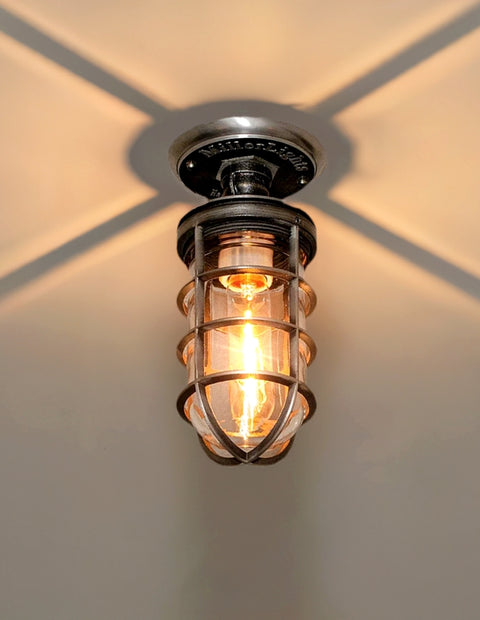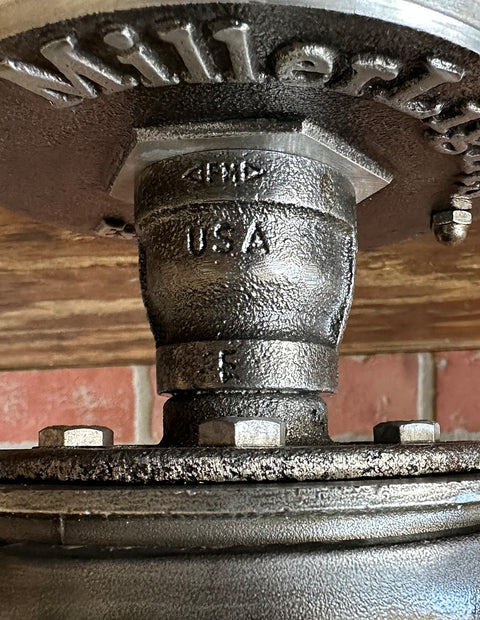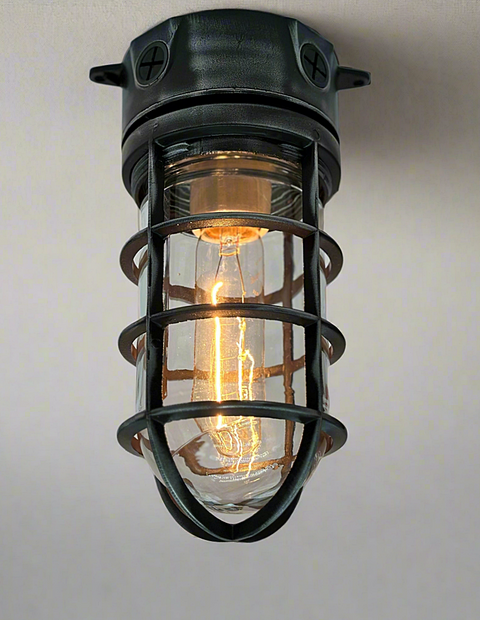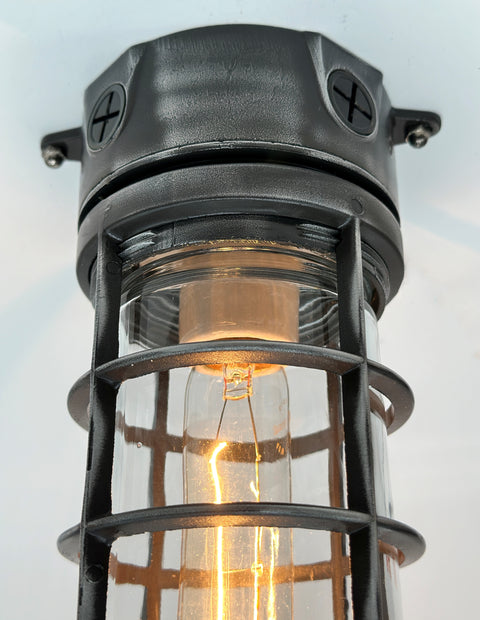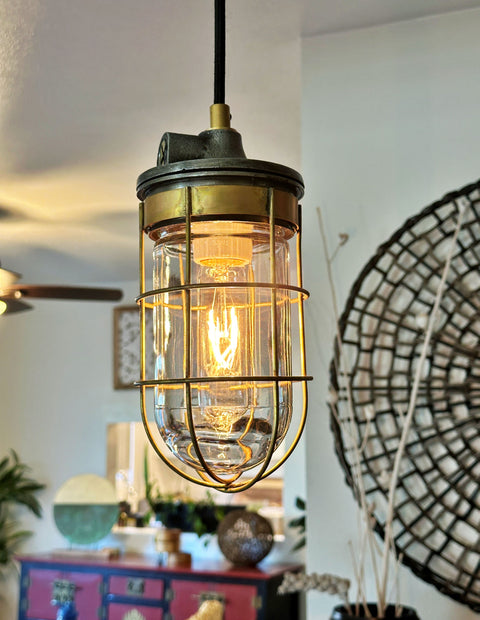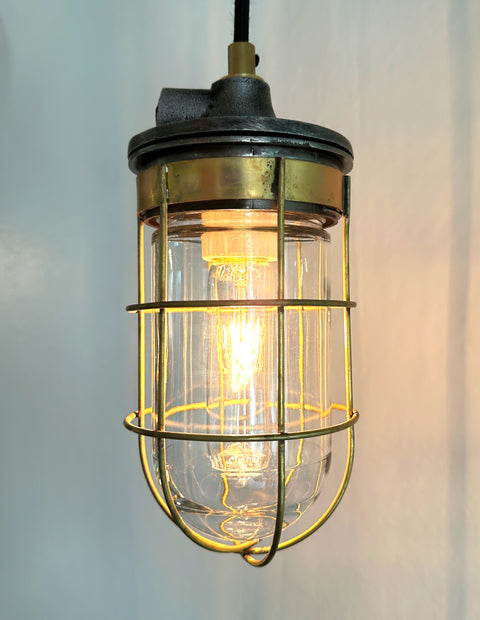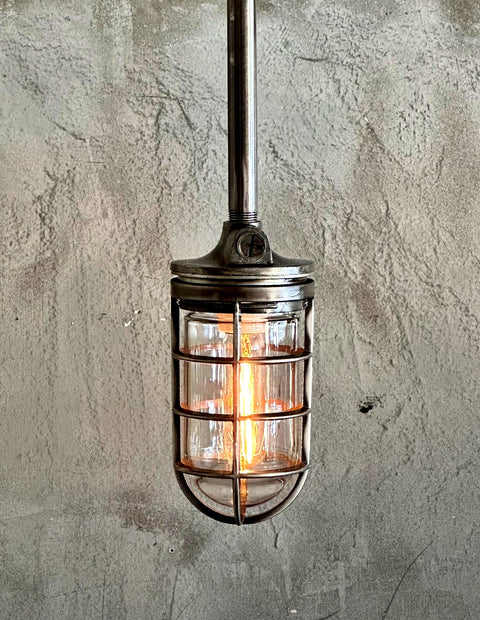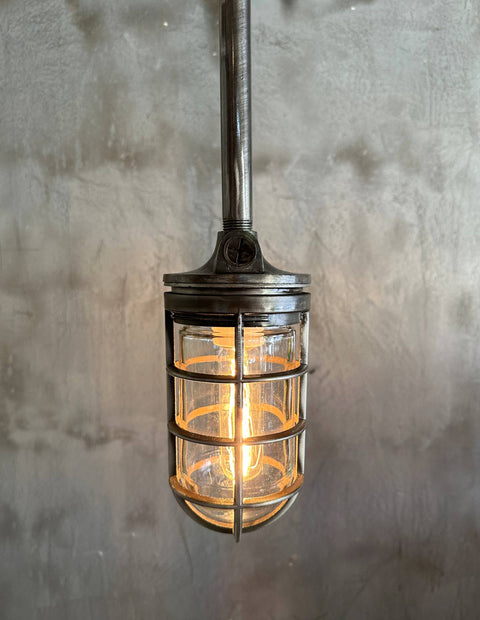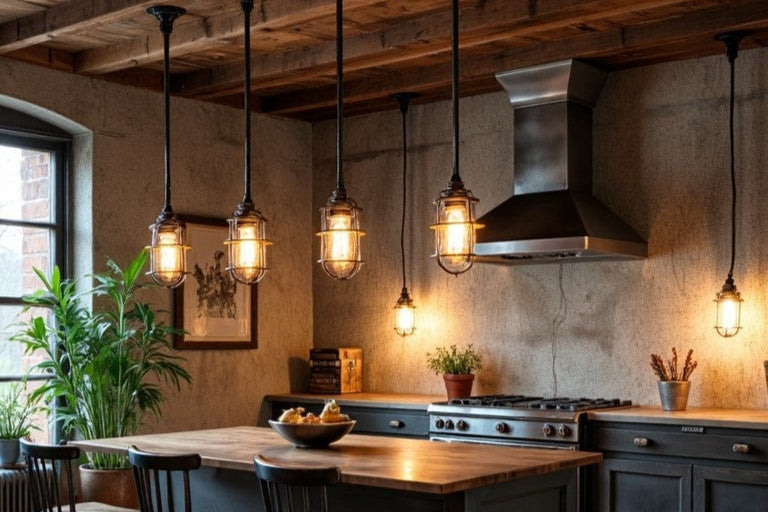
Ceiling Lighting - Industrial Pendant Lights
Handcrafted Vintage, Rustic & Modern Pendant lights
The industrial aesthetic of cage pendants rose to prominence in the early 20th century. Their robust metal construction and utilitarian design made them vital fixtures in factories, workshops, and other labor-driven spaces. Renowned for their durability, they stood resilient against the harshest of conditions, embodying both strength and purpose in every wire and frame.
Filters
Industrial-era ceiling lights embodied a minimalist ethos, defined by clean lines, geometric shapes, and a focus on utilitarian beauty. These designs celebrated simplicity and function, blending practicality with understated elegance to create lighting that was both purposeful and timeless.
"Whether you're seeking industrial pendant lights for your kitchen or large hanging fixtures for high ceilings, my collection offers unique pieces to perfectly complement your rustic or modern industrial décor." ~ J. Miller
Measuring For Pendant Lighting
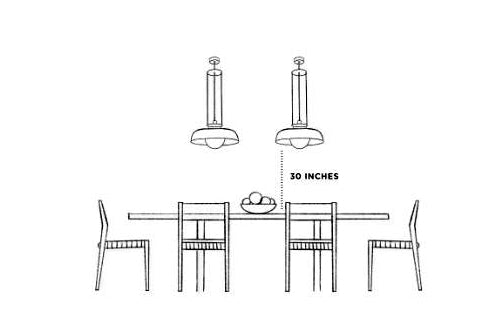
Dining
For ceiling lighting, it is important to consider how far down you want the fixture to hang from the ceiling. The bottom of a pendant should be 30 inches from the surface of your dining table.
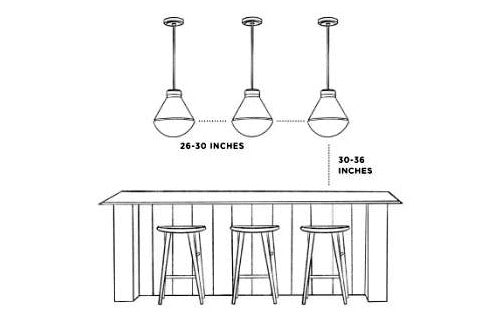
Kitchen
The distance from the island countertop to the bottom of the fixture's shade should be 30-36 inches. Between multiple pendants, 26-30 inches is the ideal distance. Alow 12 inches from the edge of the island to the light fixture.
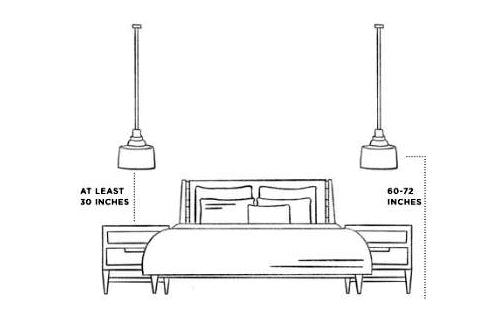
Bedroom
We recommend at least 60-72 inches from the bedroom floor to the bottom of the shade. The distance between the bottom of the shade to the top of the nightstand should be at least 30 inches. Depending on bed size, the distance between the two lights should be about 96-120 inches.
What Are Pendant Lights?
A pendant light is often simply referred to as a "pendant" or a "pendant fixture." It may also be called a "hanging light," "pendant lamp," or "pendant lighting." These terms are used interchangeably to describe the type of light fixture that hangs down from the ceiling using a cord, chain, or rod, typically featuring a single light source enclosed within a decorative shade or globe.
In a rustic industrial setting, pendant lights typically feature raw materials like metal, exposed bulbs, and aged finishes that complement the rugged charm of the space. They’re great over kitchen islands, dining tables, or in entryways, adding both practical lighting and a bold, vintage touch.
Key Benefits of Pendant Lights
- Space-Saving: Pendant lights hang from the ceiling, saving valuable floor and counter space while providing focused lighting where it’s needed.
- Style and Ambiance: With their unique designs, pendant lights add a stylish, industrial edge, especially in rustic industrial spaces, with exposed bulbs or weathered finishes that create a warm, inviting glow.
- Focused Lighting: Ideal for task lighting, pendant lights provide directed light perfect for areas like kitchen islands, dining tables, or reading nooks.
- Versatility: Available in various shapes, sizes, and finishes, pendant lights can be used in virtually any room, from entryways to living rooms, or to make a statement over a countertop.
- Layered Lighting: Combine pendant lights with other lighting elements to create a well-balanced, multi-layered lighting scheme that enhances the rustic-industrial vibe.
- Adjustable Heights: Many pendant lights offer adjustable lengths, allowing you to customize the lighting for your space and ensure it’s practical for your needs.
These benefits make pendant lights an excellent choice for both functional and decorative lighting in any rustic or industrial setting!
Additional pendant concerns?
The key difference between pendant lights and ceiling lights lies in their design and how they are mounted:
1. Pendant Lights
- Hanging Design: Pendant lights are suspended from the ceiling by a chain, rod, or cord, often dangling down from a single point.
- Focused Lighting: They typically provide more focused, task-oriented lighting and are often used over kitchen islands, dining tables, or in entryways.
- Style: Pendant lights often feature stylish designs, including exposed bulbs, metal finishes, and vintage looks, adding a decorative element to the space.
2. Ceiling Lights
- Flush-Mounted: Ceiling lights are mounted directly against the ceiling without any hanging or suspension. They provide a more uniform spread of light across the room.
- General Lighting: These lights are often used for general or ambient lighting and are commonly found in living rooms, bedrooms, and hallways.
- Simplicity: Ceiling lights tend to have a more minimalistic design and blend seamlessly into the ceiling for a clean, unobtrusive look.
In summary, pendant lights hang down and provide focused, stylish illumination, while ceiling lights are fixed directly to the ceiling and offer broader, general lighting.
